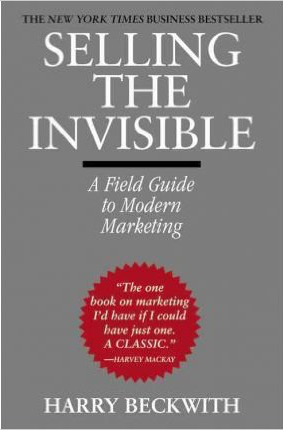Selling the Invisible : A Field Guide to Modern Marketing was first published by Harry Beckwith in 1997 and yet when Jon Barrow recently asked me for a recommended business reading list it was one of my first choices.
In a 2008 review of the book on Goodreads, an excellent summary of the best bits commented:
“Key points, borrowed from others reviews:
1) Simplify access to your work! [Learn how to create executive summaries, tables of contents, hyper-links, etc.–don’t assume that everyone knows your value and is willing to spend time digging into your work.]
2) Quality, speed, and price are *not* in competition, they must be offered simulaneously and at full value.
3) What is your promise or value proposition? Are you just showing up, or does every day offer a chance for you to show your value in a specific way?
4) Don’t just be the best in your given vocation, *change it* for the better and redefine what “best” means!
5) Sell your relationship (and your understanding of the other person’s needs), not just your expertise in isolation. Your boss or client has three choices and you are the last: to do nothing, to do it themselves, or to use you. Focus on being the first choice every time.
6) Execute with passion–and if you are a super-geek or nerd that does not have a high social IQ, form a partnership with a super-popular person and put them in front.
Advice that has stood the test of time.
Sometimes, keeping what you are selling a little invisible can also be an effective “teaser” to retain the attention of your audience.
Disney have created the perfect example of this with the trailer for their March 2017 release of a new version of Beauty and the Beast. Their 1:27 tease has gone viral, with over 40 millions views so far and climbing.
What can we learn from this?
- Invisibility can serve a purpose in marketing.
- Anticipation of the reveal can be both personally motivating and share-worthy
- Storytelling is far more evocative than product placement
Enjoy the trailer here and share:

